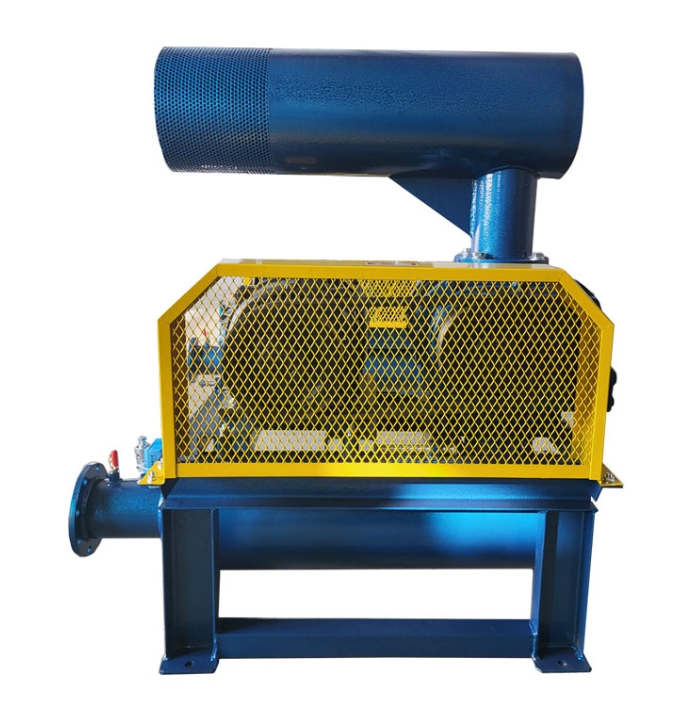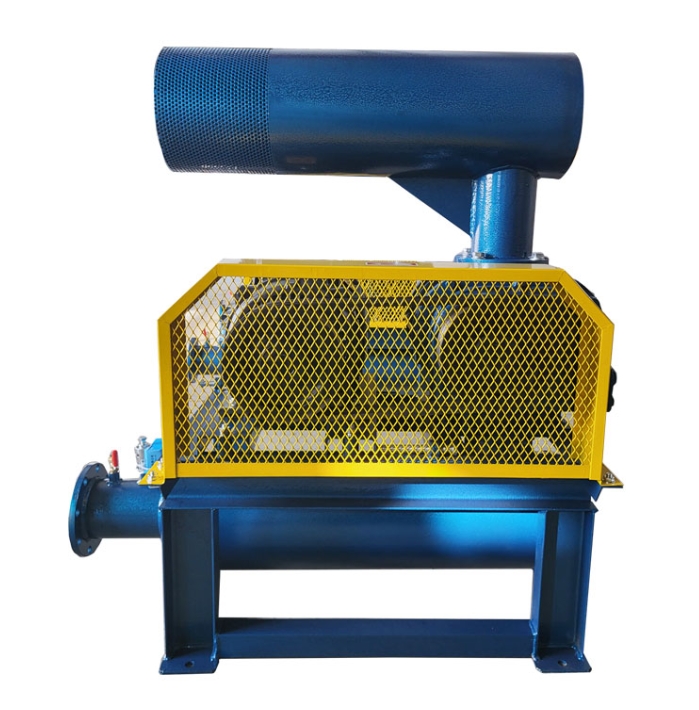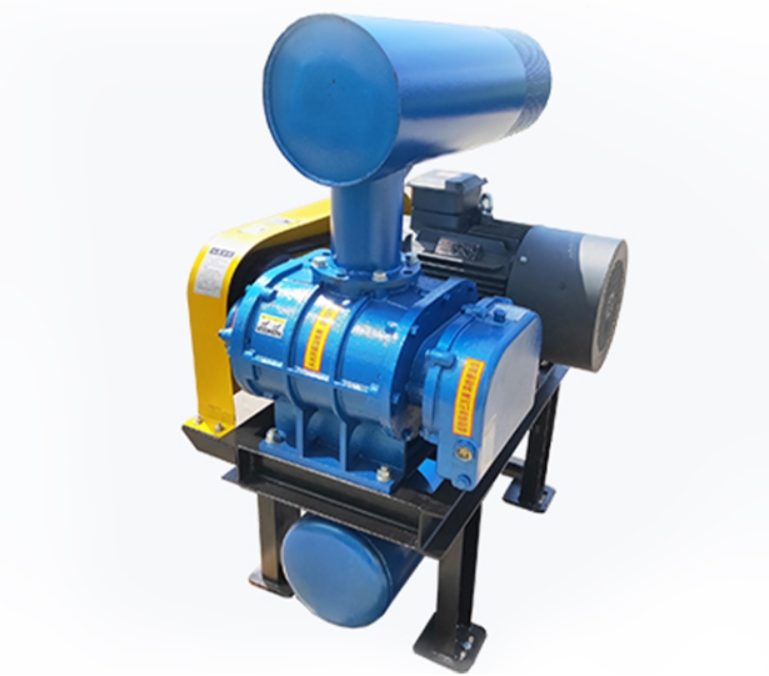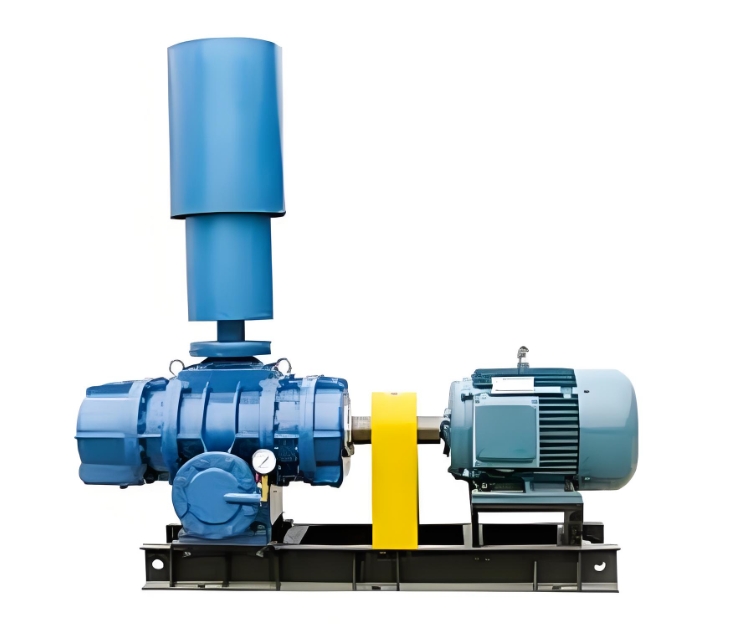The selection of a two blade Roots fan requires comprehensive consideration of factors such as medium characteristics, operating conditions, performance parameters, and installation environment. The following are detailed selection steps and key parameter explanations:
---

**1、 Core selection parameters**
1. * * Flow rate (air volume)**
-* * Unit * *: m3/min or m3/h
-Definition: The volume of gas delivered by a fan per unit time under standard conditions (usually 20 ℃, 101.325kPa).
-* * Selection points * *:
-Increase the flow rate by * * 10-20 margin * * based on actual demand (considering pipeline leakage and efficiency loss).
-If the medium contains dust or high temperature, it needs to be converted to the actual operating flow rate (refer to the gas state equation).
2. * * Pressure (Boosting)**
-* * Unit * *: kPa or bar (1 bar ≈ 100 kPa)
-Definition: The static pressure difference (non compression ratio) between the outlet and inlet of a fan.
-* * Selection points * *:
-The pressure range of Roots blower is usually 9.8~98 kPa (0.1~1.0 bar). If it exceeds this range, multi-stage or screw blower should be selected.
-Need to calculate pipeline resistance (bends, valves, pipeline length, etc.)+equipment resistance (such as aeration tank water depth).
3. * * Power**
-* * Unit * *: kW
-* * Calculation formula * *:
\[
P = \frac{Q \times \Delta P}{60 \times \eta} \times K
\]
-(Q): Flow rate (m3/min)
-\ (\ Delta P \): Pressure (kPa)
-(eta): Mechanical efficiency (usually 0.6~0.8)
-(K): Coefficient (1.1~1.3)
-* * Selection points * *:
-The motor power should be slightly greater than the calculated value (to avoid overload).
4. * * Speed**
-* * Unit * *: rpm
-Impact: The higher the speed, the greater the flow rate, but wear and noise also increase.
-* * Limitation * *: Generally not exceeding * * 3000 rpm * * (refer to the manufacturer's curve for details).
5. * * Characteristics of the medium**
-* * Clean Air * *: Standard Selection.
-Special media (such as corrosive gases, dust, and high-temperature gases):
-The material should be selected from stainless steel, coated or corrosion-resistant cast iron.
-High temperature gases require calculation of thermal expansion gaps (usually requiring special design for temperatures greater than 200 ℃).
---
**2、 Selection steps**
**Step 1: Determine the basic parameters**
-Clear requirements: flow rate, pressure, medium temperature/composition.
-For example, for sewage treatment aeration, the required flow rate is * * 20 m3/min * *, the pressure is * * 49 kPa * *, and the medium is ambient temperature air.
**Step 2: Select the type of fan**
-Two blade Roots blower: Suitable for medium and low pressure, stable flow scenarios (such as aeration and pneumatic conveying).
-Three leaf Roots blower: lower noise and higher efficiency (optional if sensitive to noise).
-* * Other fans * *: When the pressure is greater than 98 kPa, consider screw fans or centrifugal fans.
**Step 3: Refer to the performance curve**
-Match the flow pressure curve from the manufacturer's sample and confirm the model.
-Example curve:
```plaintext
Pressure (kPa) | Flow rate (m3/min)
30 | 25
49 | 20 ← Target Point
78 | 15
```
**Step 4: Verify the motor power**
-Calculate power according to the formula, for example:
\[
P = \frac{20 \times 49}{60 \times 0.7} \times 1.2 ≈ 28 \, \text{kW}
\]
-Select * * 30 kW motor * * (nearest standard power).
**Step 5: Special Requirements Configuration**
-* * Muffler * *: If installed in residential areas.
-* * Inverter * *: When flow needs to be adjusted (applicable for energy saving).
-Explosion proof motor: capable of transporting flammable gases (such as biogas).
---
**3、 Example of selection representation**
|Parameter | Value | Remarks|
|--------------|-----------------|--------------------------|
|Model | -150 | Two blade Roots blower|
|Flow rate | 20 m3/min | Operating conditions|
|Pressure | 49 kPa | Outlet gauge pressure|
|Motor power | 30 kW | 4-pole motor (1450 rpm)|
|Rotational speed | 1450 rpm | Belt drive|
|Medium temperature | ≤ 80 ℃ | Special cooling is required for high temperatures|
|Noise | ≤ 85 dB (A) | After adding a muffler, it can be reduced to 75 dB (A)|
---
**4、 Common selection errors and avoidance**
1. Neglecting the characteristics of the medium**
-Error: Stainless steel material was not selected for transporting corrosive gases.
-Solution: Clarify the composition of the medium and consult the manufacturer.
2. Excessive pressure margin**
-Error: Actual requirement is 49 kPa, choosing a 98 kPa fan (resulting in energy waste).
-Solution: Calculate the resistance of the pipeline.
3. * * Traffic not converted**
-Error: The high-altitude region did not consider changes in air density (flow rate needs to be corrected).
-Solution: Adjust the density according to the actual working conditions.
---
**5、 Recommended selection tool**
1. * * Manufacturer selection software * *: such as HIBON Taiko、 Waiting for brands to provide online selection tools.
2. Pipeline Resistance Calculation Table: Calculate pressure loss through Excel.
3. * * Third party selection platform * *: such as the "Fan Selection Assistant" mini program.
---
If specific model selection support is required, the following information can be provided for further analysis:
-Actual working conditions (such as sewage treatment, pneumatic conveying).
-Environmental conditions (altitude, humidity).
-Special requirements (explosion-proof, variable frequency, etc.).





